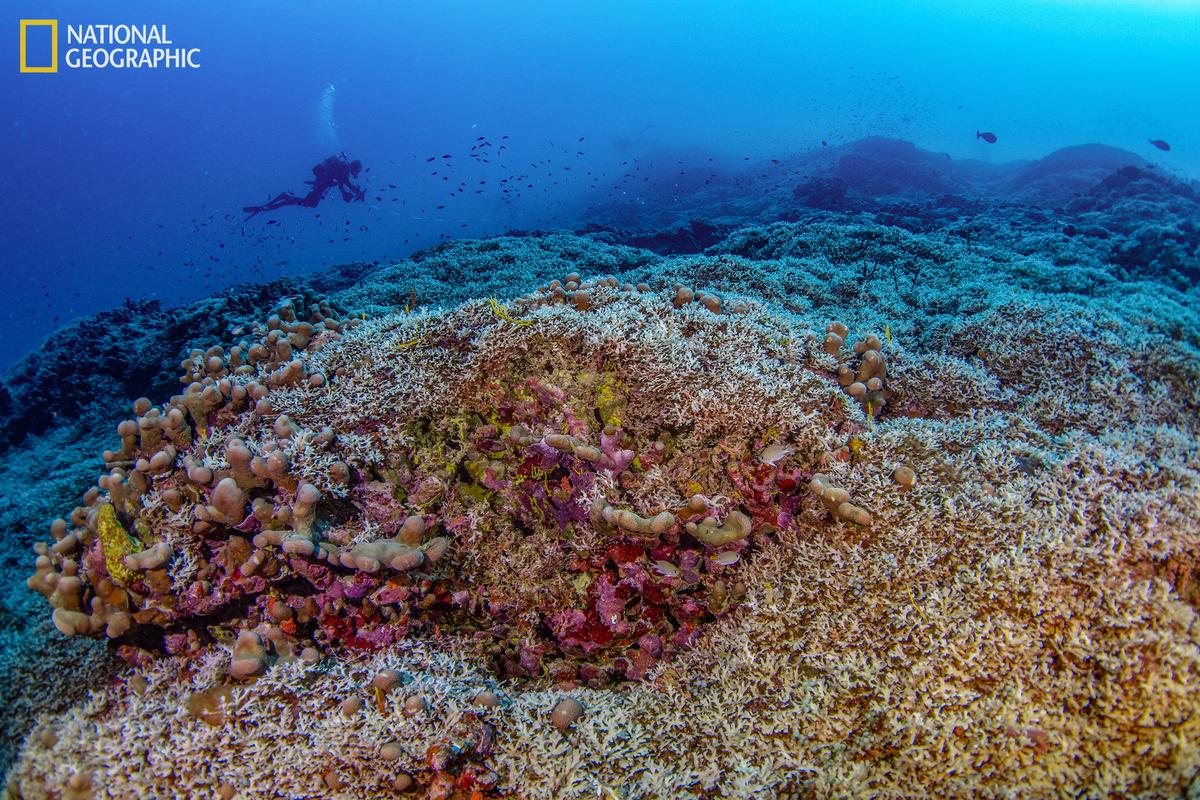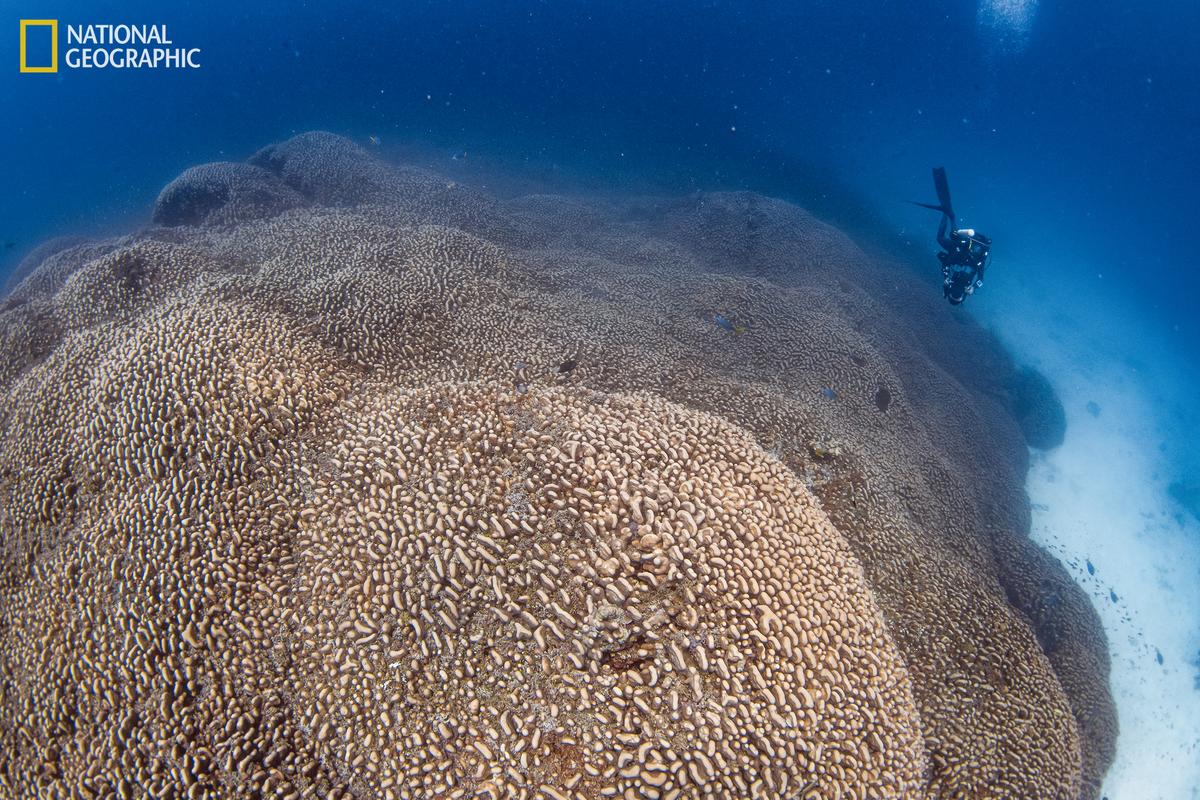Malaulalo, Solomon Islands —(Map)
Scientists on a National Geographic research trip to the Solomon Islands have discovered the world’s largest coral. The single coral colony, made up of around one billion tiny creatures, is so large that it can be seen from space.
Though underwater corals may look like rocks, they are actually made out of millions of tiny animals called “polyps”. Together, the polyps form a colony. A coral reef is normally built out of lots of colonies of different kinds.
But in this case, scientists discovered a giant structure built entirely out of one species of coral, known as Pavona clavus. All of the polyps in this colony are the same kind. And the researchers believe this colony contains about one billion coral polyps.
(Source: Photograph by Manu San Félix, National Geographic Pristine Seas.)
The blue whale is usually considered the largest creature in the ocean. But the giant coral is even larger. It measures 111.5 feet (34 meters) wide by 105 feet (32 meters) long, and it’s about 18 feet (5.5 meters) high. In all, the coral colony covers about the same area as five tennis courts.
The colony is believed to be between 300 and 500 years old. It’s a massive rolling mound made up of thousands of smaller lumps. The coral is mostly brown, but it also has yellow, blue, and red patches. The coral colony is home to many kinds of sea life, including shrimp, crabs, and different kinds of fish.

(Source: Photograph by Manu San Félix, National Geographic Pristine Seas.)
The coral was discovered by Manu San Félix, a marine scientist and underwater photographer. He was working for National Geographic’s Pristine Seas project at the time. When the researchers first spotted the coral from their boat, it was so large, they thought it was a shipwreck. That all changed when Mr. San Félix dove down for a closer look. “It’s a dream to see something unique like this,” he said.
The newly discovered coral sits in water that’s around 33 feet (10 meters) deep, and seems to be doing well – even when many other corals aren’t.
In recent years, coral reefs around the world have been damaged by rising ocean temperatures caused by global heating. This is often called “coral bleaching” because huge areas of corals can turn white as they die. As of 2023, around 75% of the world’s coral reefs have been affected by coral bleaching.

(Source: Photograph by Manu San Felix, National Geographic Pristine Seas.)
Since the giant coral colony is doing well, that may mean that it can survive in warmer temperatures. Clearly, it had to be tough to remain alive for hundreds of years. As one marine scientist who wasn’t part of the discovery said, “Anything old is really good at surviving.” That could be good news: it might mean that the colony will be able to produce new corals that can survive in warmer waters.
The discovery of the coral colony is also important for the Solomon Islands. The Po’onapaina Tribe, which is responsible for the waters around Malaulalo, has been working to protect the area. Now tribe members hope the discovery will encourage the country to protect the area even more.
😕
This map has not been loaded because of your cookie choices. To view the content, you can accept ‘Non-necessary’ cookies.
This post was originally published on here







